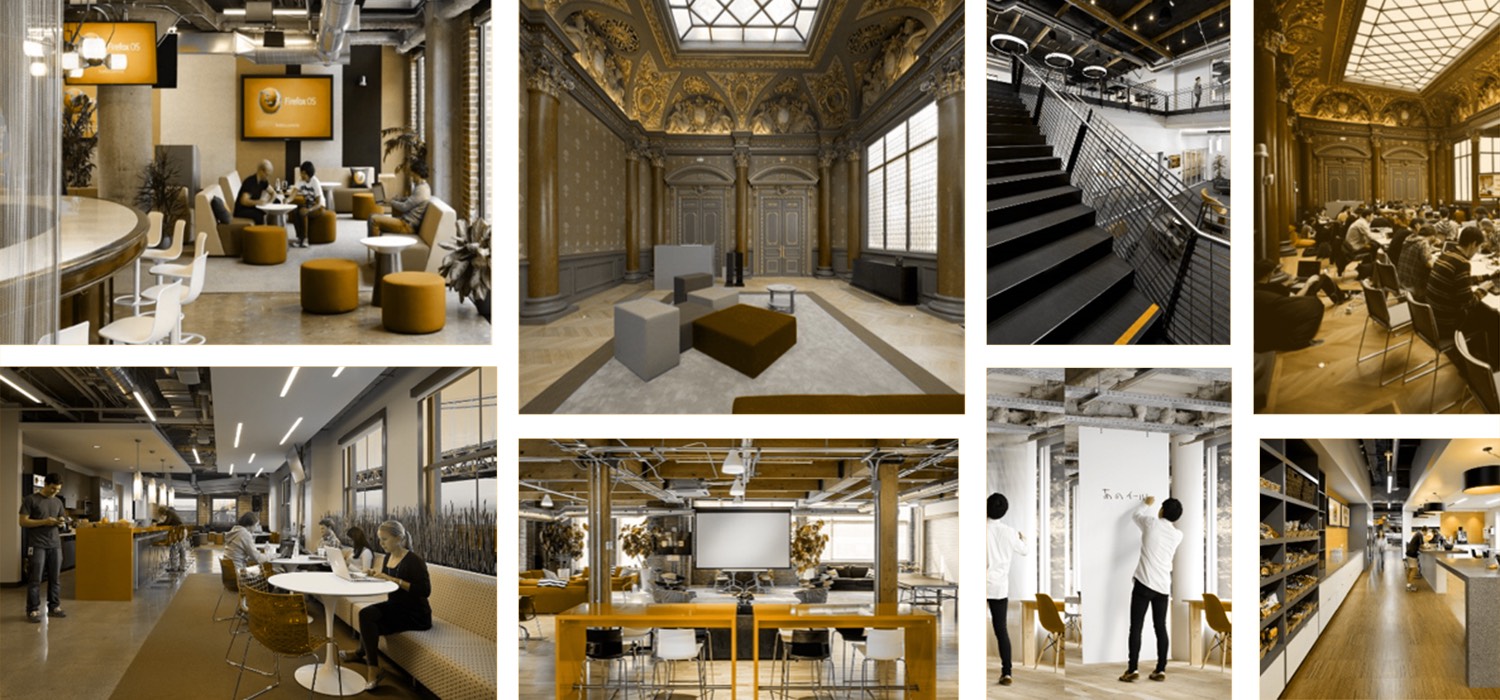
Services
- Benchmarking
- Internal & External Interviews
- Media/Communication Options
Client Objectives
- Explore applications of open source philosophy to workplace
- Discover innovative ways for the Workplace Resources team to support Mozilla as an organization
- Establish priorities for WPR and methods for continuous post-occupancy learning
- Use workplace to support non-traditional employees
Mozilla
Fail Fast Approach for the Collaborative Era
Mozilla declares that “doing good is part of our code.” After completing a set of build-outs, the real estate leadership team began to wonder how to apply its fail-fast, open-source ethos to its own workplace design and real estate strategy. What would it mean, they thought, for the workplace to be truly open-source?
They weren’t worried about recruiting and retaining talent in a traditional model. Mozilla, producer of the Firefox web browser and other software, maintains a robust community of some 8,000 volunteer coders all over the world, plus an in-house staff of 800. Thanks to the company’s strong mission and dedication to a philosophy of openness, Mozilla’s passionate coders are committed to building an internet whose source material and code are not owned by individuals or corporations but created collaboratively and shared publicly.
In keeping with this ideal, the PLASTARC team recommended that Mozilla pursue three initiatives: First, open Mozilla’s physical space for civic and industry events – in effect positioning the space as an inviting “front porch” for its various communities. Second, develop a public-facing platform to share the company’s struggles and triumphs in workplace design. We initiated this by writing and sharing blog-style stories. Third, enable and encourage others, both inside and outside Mozilla, to participate in the design process.
Our team employed a wide range of methodologies, from competitor and best-practice benchmarking to internal and external interviews, to develop recommendations based on the concepts of open source and dynamic feedback.
One element of our plan was to reposition and restructure the company’s Workplace Resources (WPR) team to better serve Mozilla’s communities. That meant, for example, expanding receptionists’ responsibilities to include serving as “community managers,” and hiring facilitators to monitor and modify physical spaces in a fluid and forward-thinking way. We also recommended using automated systems to track energy-consumption data, occupancy levels and employee-satisfaction levels, so Mozilla could monitor workplace successes and failures. The company could then integrate these metrics into WPR platforms. More importantly, it could share the information with its communities.
We issued our recommendations just as Mozilla acquired a number of new locations. Going forward, Mozilla hopes to carve out a more defined and interactive role for WPR and to establish a public face for other company offices—both physically and digitally. By working toward a truly open-source environment, Mozilla can continue to serve as an industry leader as both a content creator and a platform for worldwide learning.

